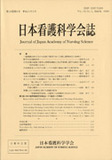Japanese
English
- 販売していません
- Abstract 文献概要
- 参考文献 Reference
- サイト内被引用 Cited by
要旨
本研究は,看護者の感性の働きについて理解を深める一助として,看護場面を写し出した6枚の写真(「看護場面的写真」)を題材とし,これを鑑賞する看護学生と看護専門職者の反応を質的に分析した.結果,「看護場面的写真」に対する反応には4つの型がみられ,本研究では各々を,第1類型:直覚的反応型,第2類型:一面的理解型,第3類型:多面的理解型,第4類型:発展的解釈型と命名した.
看護の現象に対する鋭敏な感覚と情緒豊かな理解は,看護者のもつ理論的・経験的知識によって強く影響されたことから,看護者の感性は非生得的であり知識により強化される可能性が示唆された.また,看護者の感性を開発するためには,理論や経験による知識を単に事実として記憶するにとどめず,そこから意味や価値を学びとるような内発的な学習が必要であると考えられた.
Abstract
Nursing sensitibility is essential for improvement in quality of nursing care, yet little research has been focused on ability and development of nursing sensibility. The purpose of this qualitive study was to analyze the responses of the student nurses and the registered nurses who appreciated six photographs of nursing scene (called “the pictures of nursing scene”) and to make visible how the nursing sensibility had work. The four patterns of the responses to the pictures, included the way to understand the nursing scene, were revealed as follows;(1) intuitive response,(2) one-sided understanding,(3) manysided understanding,(4) expanded interpretation.
The theoretical and practical knowledge on nursing powerfully influenced to the sharp sense and deep emotionality to the nursing phenomena. Accordingly, it was suggested that nursing sensibility was not inborn temperament and was able to enrich by learning and/or training. And to develop nursing sensibility, it was supposed that the nurses needed not only to memorize the theoretical and practical knowledge but also to learn internally to gain the meaning and the worth of these knowledge.
Copyright © 1999, Japan Academy of Nursing Science. All rights reserved.


